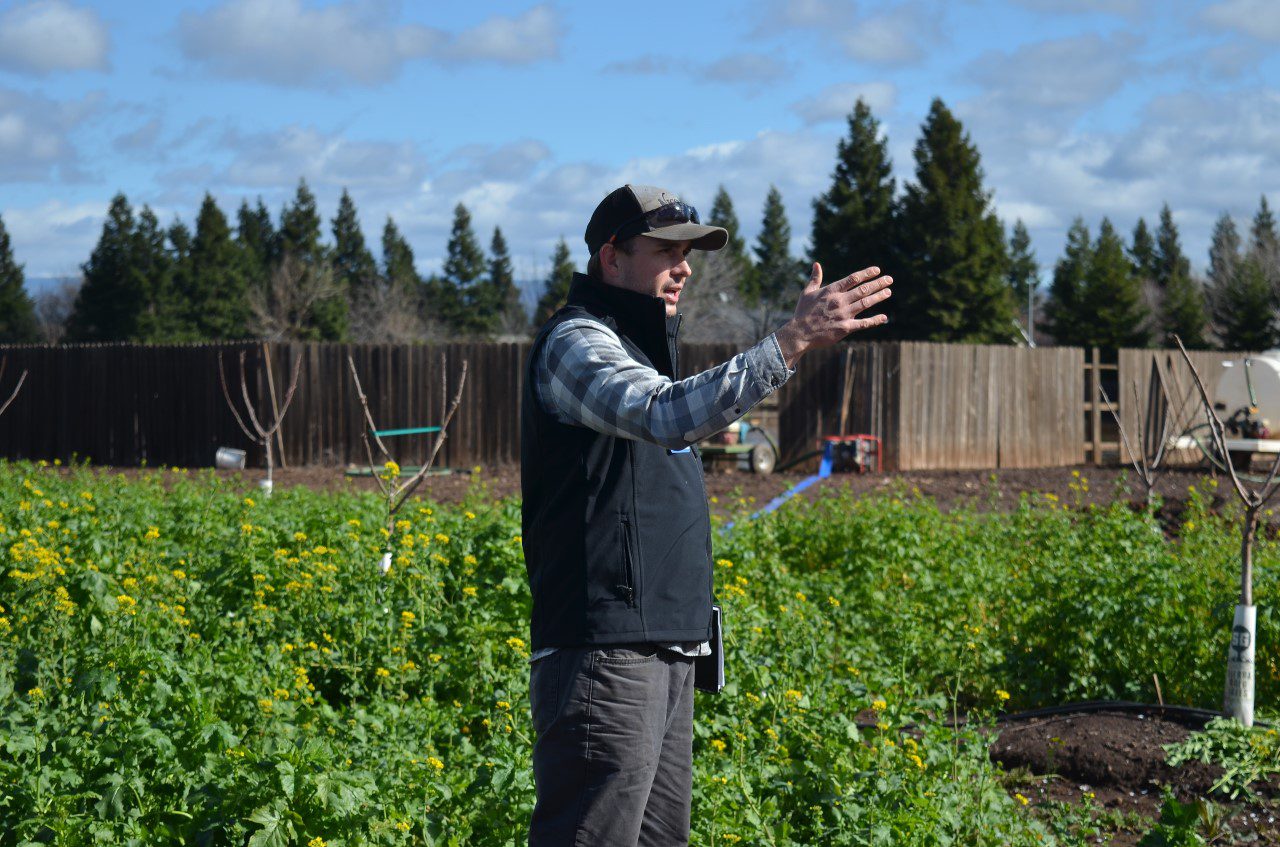
Almond growers, and growers of other tree nuts, should be aware that June 1 is the first day of open enrollment in the Seeds for Bees program. Rory Crowley, new Director of Habitat Programs for Seeds for Bees, said program enrollment will only be open for three months. Crowley said his goal is to see 15,000 cover crop acres planted in 2022.
Seeds for Bees is a Project Apis m. nonprofit program that encourages growers to support honeybee and soil health by planting cover crops in and near orchards that bloom prior to, during and after almond bloom.
This program is for California producers. Interested growers submit an application and, if eligible, participate in a one-on-one technical assistance consultation. This program has traditionally targeted almond growers, but Crowley said that growers of wind-pollinated crops may be considered for enrollment based on additional information. There is now a two-acre minimum, but participants from last year will remain eligible.
“We want cover crop on all landscapes and take into consideration neighboring crops,” Crowley said.
The goal of Seeds for Bees is to provide density, duration and diversity of forage for managed honeybees in commercial crops when natural forage is scarce. The five seed mixes offered in the program are aimed at providing nutritious pollinator forage prior to almond bloom as well as after bloom.
“Healthier bees mean stronger colonies and better pollination,” Crowley said. Preliminary research has shown that almond orchards with strong cover crops may increase bee productivity during pollination, resulting in a potential increase of 80 to 120 pounds per acre. In other words, prior to and after the almond bloom, supplemental forage can provide the necessary nutrients to build healthy and vigorous colonies for pollination of your crop.
Crowley said timing of planting is the most important part of Seeds for Bees. Seed planted in October germinates and is blooming when honeybees arrive in orchards in late January or early February.
This year Seeds for Bees is offering more funding for free seed with overall seed orders for first- and second-year participants. This year there will be $2500 in free seed off overall seed purchases for first-year participants and $1500 for second-year participants.
Because Seeds for Bees is nonprofit, buys seed in high volumes and pays for shipping, growers can capitalize on large pricing discounts through the program. “We pass on our volume, nonprofit and shipping discounts to the grower; we have a huge competitive advantage that directly benefits producers’ pocketbooks,” Crowley said.
He also said seed can be purchased through the Seeds for Bees program at wholesale prices with free shipping, but there is limited availability with each of the mixes earmarked for purchase outside of the free seed program.
Depending on the type of planting method used, no-till drill or broadcast, the width of the planting strip and the Seeds for Bees mix, the free seed may translate to upwards of 150 acres of cover crop planted in the first year.

Cecilia Parsons
Cecilia Parsons has spent the past 30 years covering agriculture in California for a variety of newspapers, magazines and organizations. During that time she has been fortunate to witness some of the important events that have shaped this diverse industry and worked hard to examine and explain these events for readers.
When Cecilia first moved to the San Joaquin Valley in 1976, her first journalism job was at a small daily newspaper where she covered “farm news.” From there she branched out to writing for a dairy magazine and a regional weekly agriculture publication.
Cecilia is part of a farming family from the rural community of Ducor where she also raises purebred sheep and is attempting to master versatility ranch horse riding.










